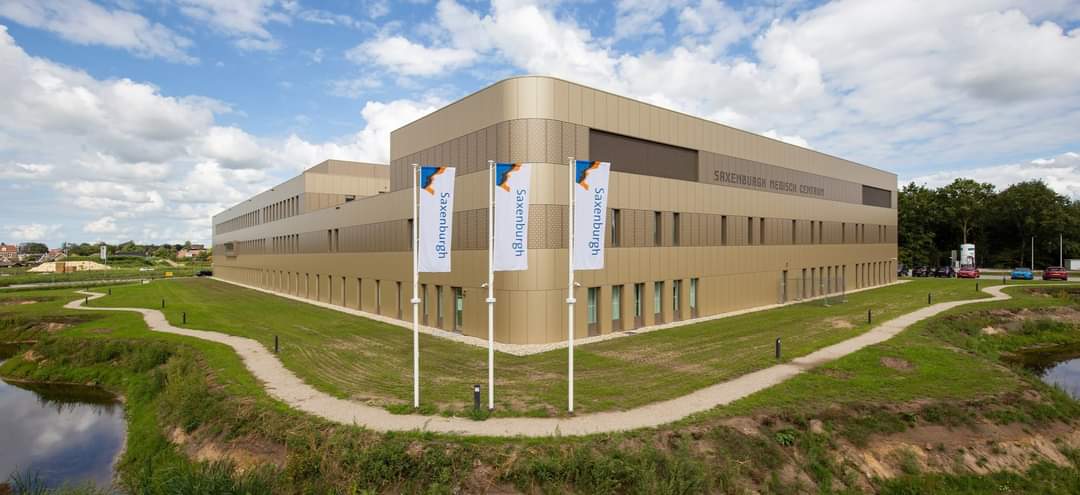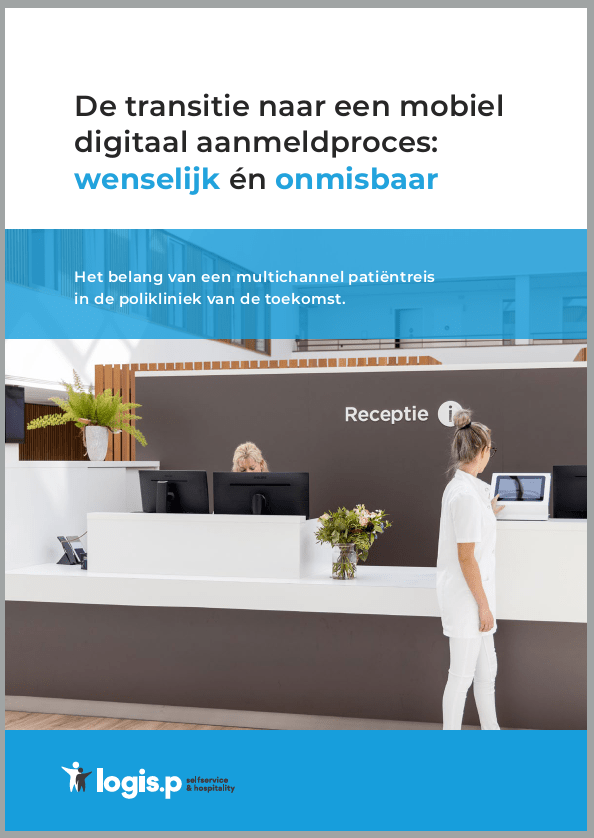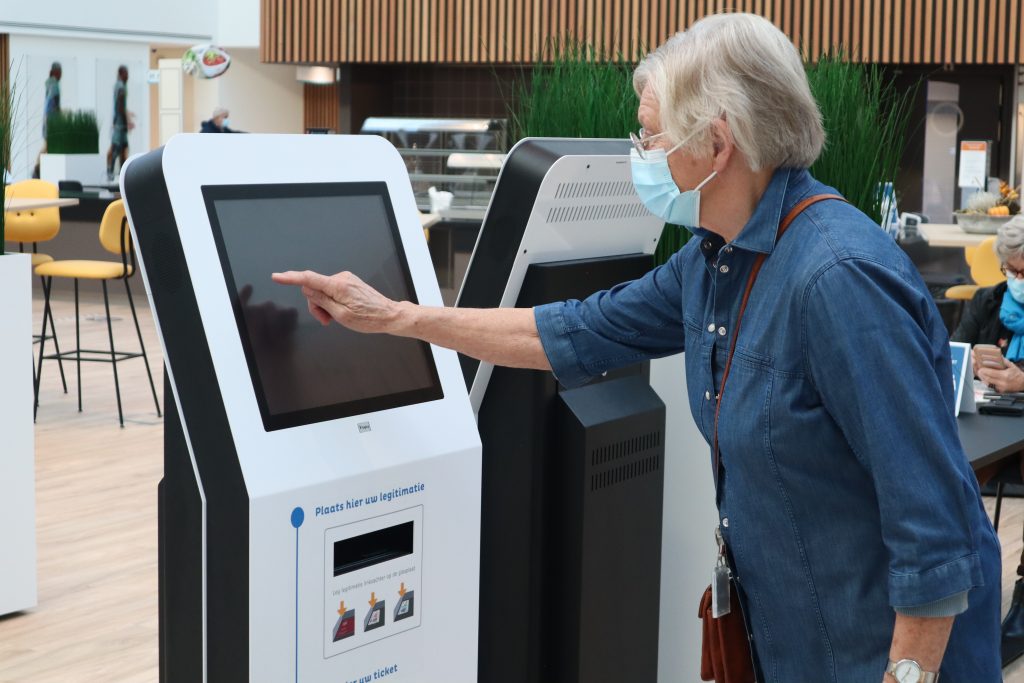Smart Appointment
Free walk-in appointments, such as in the Radiology Department or Blood Collection at the lab, can lead to unpredictable peak traffic. This can suddenly create long queues and overcrowded waiting rooms at certain times. Especially in today's society, crowded waiting rooms are undesirable and not safe.
Hoe voorkom je dit en zorg je ervoor dat de vraag in balans wordt gebracht met de beschikbare capaciteit? Eenvoudig, met Logis.P Smart Appointment! De oplossing om processen van vrije inloop te transformeren naar laagdrempelig werken ‘op afspraak’.
Within hospitals, every effort is made to ensure that patients, visitors and employees alike can stay and work safely in the hospital. Virtually all logistical processes and procedures in the hospital are adapted for this purpose. From separate walking routes in the hospital, adjusted appointment times and intelligent call systems with decentralized waiting rooms to prevent waiting rooms at outpatient clinics from being too full. For planned care processes, where it is known in advance exactly how many patients or visitors will be present at what time, this is feasible.
For unscheduled care, this turns out to be a lot more complicated in practice. When patients can come in on a walk-in basis, there is a real risk of long queues forming. For this reason, many institutions are opting to no longer allow appointments to take place on a walk-in basis, but rather by appointment. Smart Appointment from Logis.P offers a capacity planning and appointment scheduling system to fully support this process.

Appointment scheduling linked to capacity by location
Smart Appointment is part of the Logis.P Universe platform. An advanced web-based application to optimize patient logistics processes for planned- and unplanned care. With Smart Appointment, available capacity per location can be recorded. For all appointment types performed at a location, the duration of an appointment is recorded. By linking this with the opening times and available staff per day, the available capacity in the system is filled. For example, hospital locations may have one or more staff members scheduled for all appointment types and activities throughout the day, but at outpatient clinics in the region, for example at a GP clinic or community center, a staff member is only available for 2 hours in the morning.
In this way, the system provides insight into the available capacity. It is then made known (e.g. via primary care, websites and local media) that services for, for example, blood sampling or the submission of materials can only be done by appointment. This prevents people from coming to the hospital unannounced in large numbers (usually in the morning hours on Mondays and Tuesdays).
To point patients in the right direction for making an appointment, an e-mail can also be sent with the link directly to the web page for making the appointment.
Smart Appointment for the patient
For a patient who has been referred with a request to have blood drawn, Smart Appointment works very simply. A web form can be used to schedule an appointment in 4 steps. When filling out the form, only the options that are available are shown. The look and feel of the application is customized to match the hospital's corporate identity.
By selecting an available time slot at the date/time and location convenient to the patient, an appointment is set. In doing so, a confirmation email is automatically generated. If sign-in kiosks are in use at the lab, a QR code can be included in the mail that allows the patient to sign in; this is not required for small locations without a sign-in kiosk.
Using Smart Appointment supports an end-to-end process that makes unscheduled care predictable, eliminates long wait times for patients and prevents crowded waiting rooms. A clear win-win situation!

Functionalities Logis.P Smart Appointment
- Efficiënt definiëren van beschikbare capaciteit voor uiteenlopende typen afspraken / diensten per locatie
- Patiënten kunnen laagdrempelig via internet op gebruiksvriendelijke manier afspraken boeken
- Medewerkers van Klant Contact Centrum of polikliniek kunnen eveneens eenvoudig afspraken inplannen of wijzigen
- Automatische e-mail bevestiging en afspraakherinneringen van gemaakte afspraken
- Flexible deployment; installation Smart Appointment both possible on-premise and as a cloud application.
- Suitable for multi-location application; specific appointment types, opening times and capacity can be defined for each location
- Applicatiebeheer is laagdrempelig en kan door de eigen organisatie worden gedaan
- Single sign-on integratie voor gecontroleerd gebruikersbeheer via OAuth functionaliteit
- Uitgebreide management rapportages worden meegeleverd via embedded PowerBI
- Zowel toepasbaar als afsprakensysteem, alsook geïntegreerd met wachtrijsturing i.c.m. aanmeldzuilen en oproepschermen.
Benefits Smart Appointment
- Being able to schedule “by appointment” allows for spreading and prevents unwanted peak loads
- Door geplande toestroom worden lange wachttijden voorkomen; hybride werkwijze i.c.m. vrije inloop blijft ook mogelijk
- Higher perception of quality and positive image for the hospital
- Self-service toepassing (24/7 bereikbaar); laagdrempelige afsprakenmodule verlaagt werkdruk van Klant Contact Centrum
- Proces optimalisatie; door koppelingen met digitale verwijzingen (ZorgDomein) en/of orderkoppeling met LIS, RIS of ZIS
- Meertalig beschikbaar waardoor doelgroep voor self-service wordt vergroot.
Logis.P biedt flexibele integraties met onder andere:
 More information
More information
Would you like to find out more about how our solutions work and what their functionalities can do for your organisation? Please submit your details, and one of our professionals will contact you as soon as possible.

Optimal patient journey at Saxenburgh Medical Centre
De opening van een nieuw ziekenhuis in Hardenberg was de aanleiding om de planning en het ontvangstproces grondig te herzien. De nieuwe methode is vooral privacy-vriendelijker. De grondslag voor Saxenburgh werd in het begin van de twintigste eeuw gelegd dankzij een nalatenschap. Zo konden ziekenhuizen worden gebouwd in Hardenberg en Coevorden. Beide ziekenhuizen fuseerden in 1980 en gingen

Optimal patient journey at Saxenburgh Medical Centre
De opening van een nieuw ziekenhuis in Hardenberg was de aanleiding om de planning en het ontvangstproces grondig te herzien. De nieuwe methode is vooral privacy-vriendelijker. De grondslag voor Saxenburgh werd in het begin van de twintigste eeuw gelegd dankzij een nalatenschap. Zo konden ziekenhuizen worden gebouwd in Hardenberg en Coevorden. Beide ziekenhuizen fuseerden in 1980 en gingen






